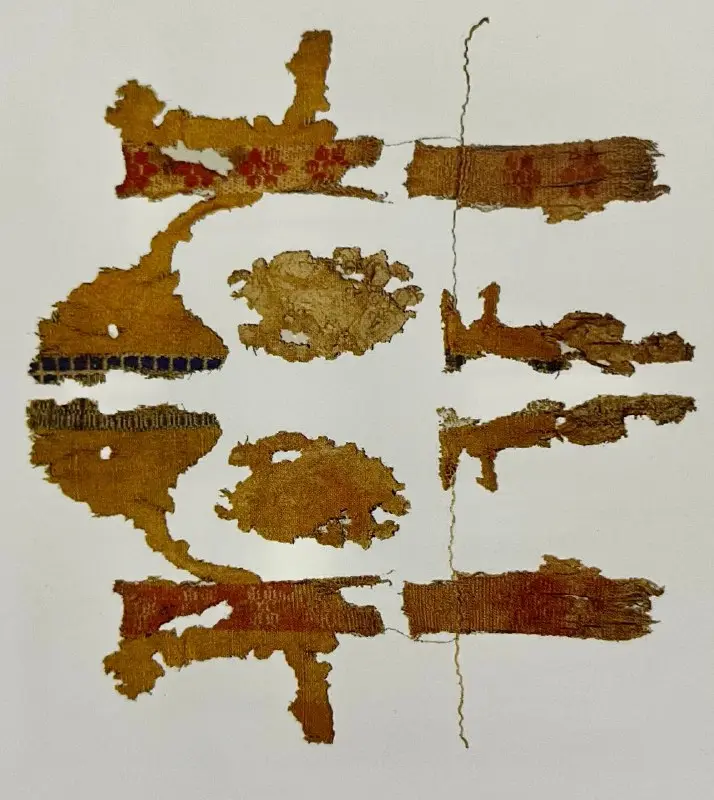Evidence of Carpet Weaving in Parthian Period in Qumis:
Evidence of Carpet Weaving in Parthian Period in Qumis Long and significant epoch of Parthian kings that lasted about five hundred years is one of the obscurest parts if Persian history especially in art and the most crucial reason is few evidence about the situation of that time of Iran and eventually carpet weaving. The only proofs that doubtfully can be related to that era are the findings founded in Qumis in 1967. These excavations were done David Stronach and John Hansman between 1967 and 1970 that were not Iranian. Before that the most hypotheses about carpet weaving in Parthian and Sassanid eras were based on Arabic texts.
Qumis was situated in the dessert of northeast of Iran near Damghan. Archeologists believe that it was next to Hecatompylos that the victorious Greeks after Alexander made it. It was developed between the middle of third century B.C. and Parthian period, that Greeks and Romans made a lot of efforts to occupy Iran. The Silk Road passed from near Qumis and beneficial businesses done there brought silk and additives from east to west and glasses and horse from west to east and that made the region rich. Qumis textile was discovered in the three-storey houses made of clay. These kinds of places were used as cemeteries in Parthian era. Burying the bodies in such places instead of underground backed to a tradition of Zoroastrians to prevent earth pollution. Of course textile found in this place is not all that were found in the excavations in Qumis but just some of them were selected that are kept in Metropolitan Museum that headed excavations and the results were published in Hali Magazine in October 1991. Archaeologists attributed the oldest sample in these discoveries to the first half of the first century B.C. It’s a Brown wool felt that is part of a waistcoat with sleeves.

Its size, that is with a silky stripe as long as the round of the neck, indicates that it belonged to a child and that is the oldest cloth ever found in Iran. Also the silky stripe is the oldest silky part in Iran. Its color is greenish blue. The other parts were found from second cemetery the were for sixth century that this date was estimated based upon Sassanid coins and Fourth Hor-moz, 8-587, and they are amazing due to their variety.
One woolen part is dark brown by a white stripe that is seen differently in back.
Another group of these woolen parts are square pieces of blue wool with red six-petal flowers that these components might comprise fragments of a carpet. The oldest carpet was for eighth century that was for two centuries after emerging Islam before finding the carpet of Qumis. Finding Qumis carpet backed the estimation of carpet weaving at least to sixth century.
But the most brilliant part found in Qumis was a piley textile with curly shaped pile that may be ugly to a lot of visitors but it can be the oldest piley Iranian carpet that has been found inside Iran. Of course another pi-ley and frizzy piece was obtained in the excavations in Hasanlu that is keeping in the museum of University of Pennsylvania and it’s older and for 800 years B.C.

but it may not consider as a carpet. In structure and form, Qumis carpet contains pile that is placed simply among warps. The pile of this carpet is undyed wool in cream. Based on Ms. Kajitani’s analysis warp is composed of two threads in Z shape that there are 5 warps in each centimeter. Woof is composed of an S shape thread and there are 33 wefts in each centime-ter. Pile is from two threads in Z shape with curls with 4 to 5 centimeters length and there are 2 to 3 curls in each centimeter. The very carpet was clean immediately after finding and tests were done in museum of Metropolitan in New York. It was borrowed to museum of Anthropology of University of California for an international conference ICOC in 1990.
There were long discussions about the Qumis textile by Ms. Kajitani, Ancient Consultant of Arthor M. Sack-ler Institute. Some classified that in Parthian era because this city was developed in that era. But in the other hand, based on the age of the part, others related it to Sassanid epoch. So it’s wonderful in comparison with other legendary parts like Baharestan and due to historical evidence about that, it’s an undeniable and unique Sassanid carpet.
